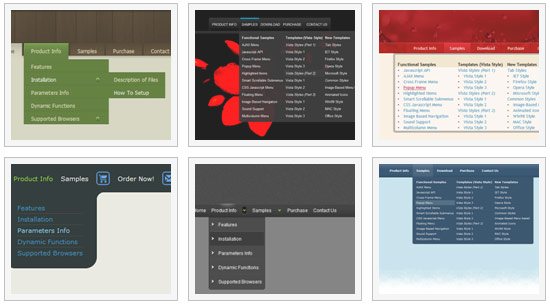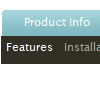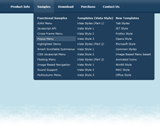Recent Questions
Q: I want to be able to right-click somewhere on the page and have the menu javascript pop up where the mouse is and have at least one level of submenus available.
A: See how to create javascript pop up menu using Deluxe Menu here:
http://deluxe-menu.com/popup-mode-sample.html
Q: Actually I think we've managed to figure most of the below out, so I'd be grateful if you could give us some pointers with the following instead...
How might we be able to include your javascript menu scripts within e.g. asp tags? We'd like some menu options to be hidden from some users, but I'm getting errors when I put asp tags in your data.js file.
A: It seems to me that you have syntactical error in your code.
Please, check that you don't have double quotes in your code. If you have several quotes you shoulduse back slashes before them, for example:
<%
response.Write( " ['|Test A','javascript:alert(\'Test\');', '', '', '', '', '0', '-1', '', ], " )
%>
["|Loan Profile","../pipeline/loan_profile.asp?id=<%=rsLoans('loan_id')%>", "", "","", "", "", "2"],
Q: I have the trial of deluxe menu. We are in the process of purchasing it.
I just noticed that the div drop down menu are not going in front of a flash element that is on the page.
I have set the "opaque" value as per your faq.
Any other things I should check to get the div drop down menu to be in front of the flash element?
A: You should add the following function in the beginning of your data file
function dm_ext_ruleObjectHide()
{
return false;
}
See more info here:
http://deluxe-menu.com/objects-overlapping-sample.html
Q: By the way, I'm not sure I know how to save a screen shot of the vertical drop down menu in the the browser window. Any tips will be appreciated.
A: To save a screen shot of your menu in the browser window you should do the following:
1) Open your website in the browser
2) Open any graph editor, for example Paint and press "Ctrl + V" buttons on the keyboardor go to "Edit / Paste".
3) Then go to "File / Save as".
Save as type - JPEG or PNG.
Select a folder where you would like to save a screenshot and click "Save" button.
Try that.









